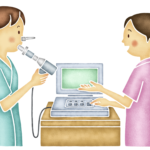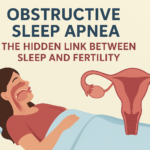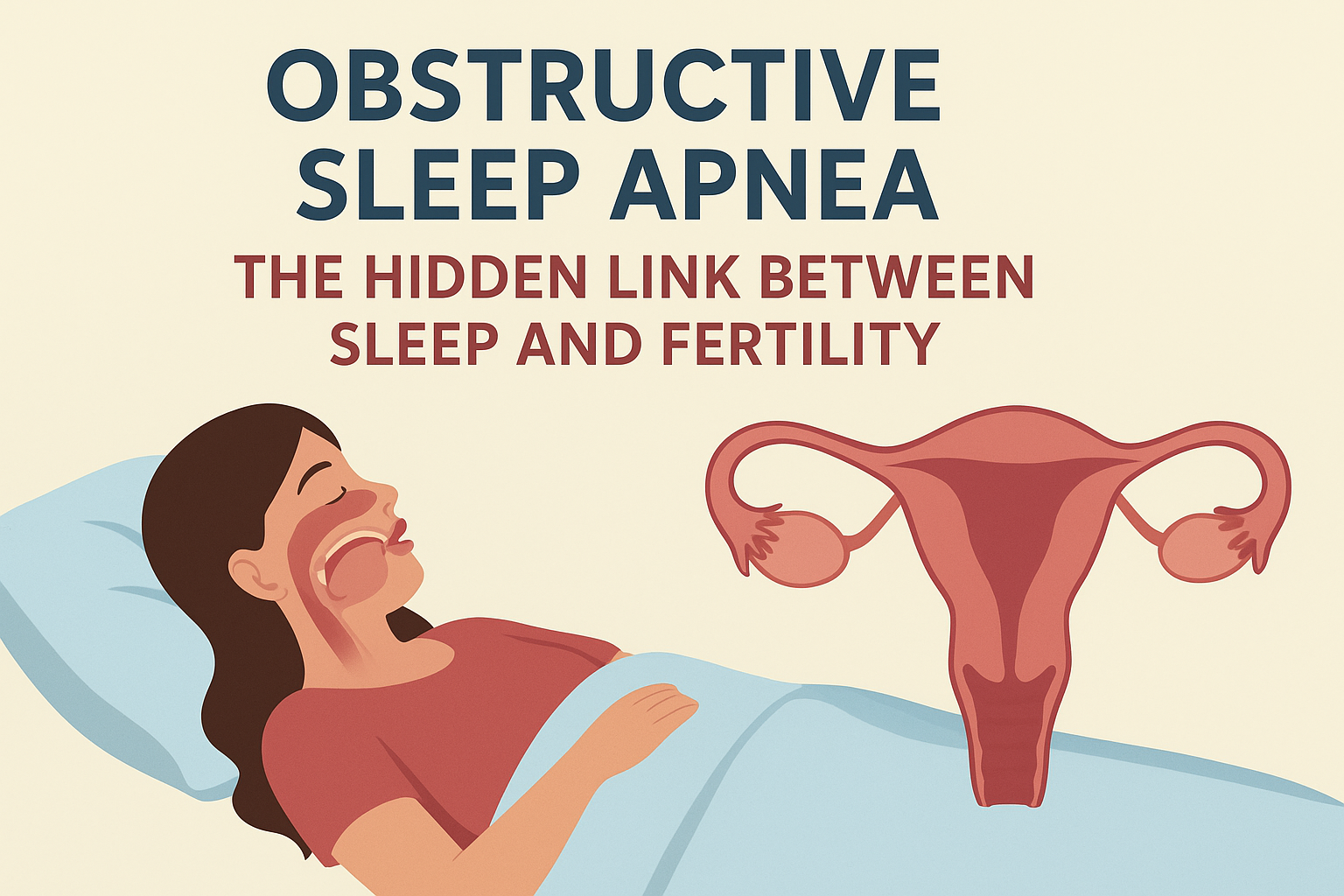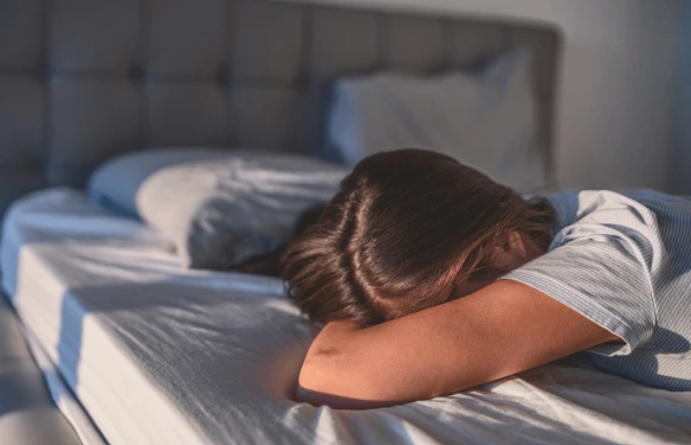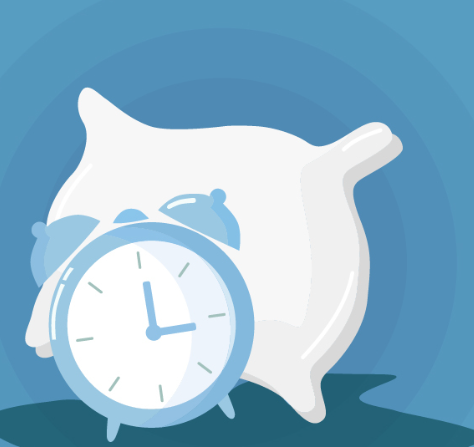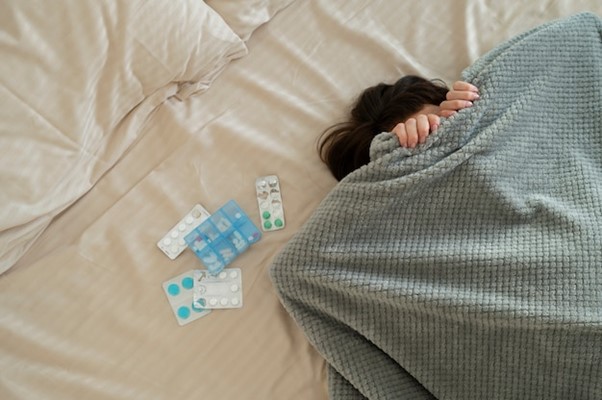By Dr.Manvir Bhatia & Ananya, Dated!! 28th April 2022

What is Sleep?
Sleep is a state of physical rest but dynamic activity. This state is controlled by neurotransmitters released by neurons of different groups of nerve cells in the brain. These cells produce neurotransmitters such as serotonin and norepinephrine that keep us active and awake. There are neurons in the brain stem that connect the brain to the spinal cord. It is the activity of these neurons that allow us to fall asleep. They switch off the signaling of the neurotransmitters that keep us awake. There is also a build-up of adenosine while we are awake, causing drowsiness. When we sleep, adenosine breaks down, revitalizing our brain and body.
Stages of Sleep:
Stage 1:
This is a state of extremely light sleep. A person can be awoken very easily and tends to remember the dreams at this stage. Our muscle activity starts to slow down and our eyes move very slowly.
Stage 2:
This is a state in which the brain waves start slowing down. Eye movements stop and there are occasional bursts of rapid waves called sleep spindles.
Stage 3 and 4:
Brain waves are extremely slow during stage three and delta waves appear interspersed with smaller and faster waves. Delta waves occur almost exclusively during the fourth wave. It is very difficult to wake someone up during stages 3 and 4 of sleep. There is absolutely no eye movement and muscle activity. If awakened, a person is very confused and groggy. It takes some time to adjust to the surroundings. Some children might experience night terrors, sleepwalking, and bedwetting during deep sleep.
REM sleep:
Our breathing gets rapid, shallow, and irregular. Our blood pressure and heart rate rise. Eyes have jerky movements and the limbs are temporarily paralyzed for a short period of time. It occurs around 40 to 90 minutes after we fall asleep. On average, it is 90-110 minutes long. Initially, our sleep cycles have short REM and long durations of deep sleep. As morning approaches, we are mostly in the 1st, 2nd, and REM stages of sleep.
Deep sleep refers to slow-wave sleep i.e. third and fourth stages of sleep. Our heart rate and breathing are the lowest at this stage. Our brain waves tend to slow down and our muscles and eyes relax. It is during this phase that the body restores itself by repairing our tissues and strengthening our immune system. Deep sleep is essential for us as it is the factor that decides whether we will wake up fresh and energetic.
Ways to increase deep sleep:
Slow waves play a very important role in deep sleep. Hence, strategies to improve sleep efficacy have been targeted to improve the potential of the slow-wave activity. Clinical investigations have reported tiagabine and gaboxadol to increase slow-wave sleep by enhancing GABAergic transmission. Dependence and tolerance are common issues that one faces in this respect.
Non-pharmacological methods have been used to deal with these limitations.
Stimulating the brain:
This is done with the help of an electric current and magnetic field. According to a study by Marshall et al.,(2006, Nature) application of intermittent transcranial direct-current stimulation (tDCS) at 0.75 Hz for 5-min intervals separated by a 1-min off period after the onset of slow-wave sleep (SWS) increases EEG power. This increase was associated with sleep-associated memory acquisition.
A study by Miassimi et al., (2007) demonstrated that perturbing the cortex with the use of transcranial magnetic stimulation (TMS) during NREM sleep can trigger SWS.
Sensory stimulation :
A study by Cordero et al., 1986(American journal of perinatology) demonstrated that the time spent in sleep increased in infants when subject to vestibular stimulation. A similar study was conducted on healthy adults by Krystal et al.,(Journal of clinical sleep medicine, 2010). It showed that the duration of sleep onset decreased with bilateral electrical stimulation of their vestibular apparatus as compared to sham nights.
Acoustic stimulation significantly enhances slow-wave sleep. If there is intermittent stimulation with gaps of 15 seconds, remarkably large and numerous slow waves were observed.
Regular exercise:
A good amount of exercise that tires us out and makes us sweat is a really useful step towards getting good quality deep sleep. Exercising about 150 minutes a week enhances one’s sleep quality.
Inculcating yoga in our life improves sleep quality. Practicing meditation along with yoga and exercise has a positive influence on our life and
Healthy diet:
A healthy diet is a prerequisite to a good quality duality sleep. Greater intake of fiber results in an increase in the duration of deep sleep.
Stimulants such as caffeine should be strictly avoided before going to sleep. There should be a gap of seven hours between intake of caffeine and a good night’s sleep.
Alcohol works as a sedative, but consuming it before going to sleep adversely affects the sleep quality. Once the sedative effect wears off, we are wide awake and unable to sleep further. Experiencing this regularly has deleterious effects in the long run.
Use of eye masks:
Light greatly influences our quality of sleep. If one is exposed to light (due to work timings) at night, she should keep an eye mask ready to grab quality sleep.
Hence, we conclude that getting a good night’s sleep refers mainly to enough deep sleep. If we wake up tired and unenergetic regularly, we should consult a professional as soon as possible. Also, living a disciplined life regularly, and following an appropriate timetable irrespective of work and other important commitments shall be helpful in the long run.
References:
Marshall, L., Helgadóttir, H., Mölle, M., & Born, J. (2006). Boosting slow oscillations during sleep potentiates memory. Nature, 444(7119), 610–613. https://doi.org/10.1038/nature05278
Massimini, M., Ferrarelli, F., Esser, S. K., Riedner, B. A., Huber, R., Murphy, M., Peterson, M. J., & Tononi, G. (2007). Triggering sleep slow waves by transcranial magnetic stimulation. Proceedings of the National Academy of Sciences of the United States of America, 104(20), 8496–8501. https://doi.org/10.1073/pnas.0702495104
Bellesi, M., Riedner, B. A., Garcia-Molina, G. N., Cirelli, C., & Tononi, G. (2014). Enhancement of sleep slow waves: underlying mechanisms and practical consequences. Frontiers in systems neuroscience, 8, 208. https://doi.org/10.3389/fnsys.2014.00208

